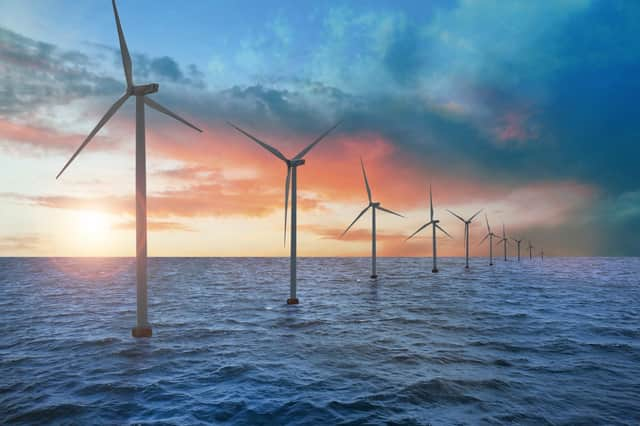China factor may emerge in Scotland’s offshore wind aims - Jeremy Grant


As Burns Night celebrations go, the annual black tie “Chinese Burns Supper” must rank as one of the most colourful cultural mash-ups on the calendar, combining the address to the haggis and a Chinese lion dance.
The organiser, the China-Britain Business Council, hands out awards to Chinese and Scottish businesses and at this year’s event a few weeks ago in Edinburgh, “Chinese Corporate of the Year” went to COES Caledonia (UK) Ltd.
Advertisement
Hide AdAdvertisement
Hide AdCOES, incorporated in 2018 and based in Dundee, is a unit of state-owned maritime giant China Ocean Engineering Solutions Group. While the business may not be a household name here, its award highlights how some of China’s largest state-owned energy players have been operating in Scotland for years.


China National Offshore Oil Corporation (CNOOC), one of the country’s largest oil and gas companies, operates three oil fields in the North Sea including (since 2007) Buzzard, one of the UK’s highest-producing.
Now, a new chapter is unfolding with the arrival of some of the biggest Chinese players in renewables.
Red Rock Power, a European subsidiary of SDIC Power, a state-controlled energy company based in Beijing, owns 25 per cent of the entity that has since 2019 operated the Beatrice wind farm off Caithness. It also co-owns, with Ireland’s ESB Energy, a second planned wind farm off Angus that could generate power for 1.6 million homes once completed.
This makes sense as China has proven global expertise in renewables, just as it has in oil and gas. Chinese turbine manufacturers are naturally keen to sell to wind farm developers in the North Sea. Most of those are part of ScotWind, a vast, 20-consortia strong project involving companies from Japan, Italy, Germany and France. ScotWind has obvious energy security benefits for the UK.
The Scottish Government and industry are working on a programme known as the Strategic Investment Model (SIM) to encourage collaboration to develop the supply chain required for ScotWind to succeed. Last month, China’s Mingyang Smart Energy, which recently unveiled a turbine almost as long as the Eiffel Tower is tall, was among companies listed as involved in SIM with a proposed wind turbine manufacturing facility.
Some in the industry are squeamish about the involvement of Chinese wind turbine makers in offshore wind. They note that ultimate control of the complex electronics that are part of the operating system for a wind turbine as well as transmission to the grid often sits with the manufacturer, not the developer.
A bigger issue may be competition. With Brussels already alarmed by the effect on European solar panel makers of a flood of cheap Chinese products, it is now turning its attention to Chinese wind turbine manufacturers for the same reason.
Advertisement
Hide AdAdvertisement
Hide AdChina’s Edinburgh consulate says renewable energy is “an important area” for “China-Scotland cooperation” and that China’s bilateral trade and business is “always carried out within the framework of the WTO regulations and abides by related rules and laws”. It adds: “Protectionism, exaggerating security concern and politicising business issues will only damp normal exchange and cooperation”.Ultimately, facts will be what matters. But the risk of Scotland’s offshore renewables ambitions getting caught in the crosswinds of geopolitics, trade and energy security can’t be overlooked.
Jeremy Grant is a freelance writer and editor, and was a journalist at the Financial Times and Reuters for 25 years
Comments
Want to join the conversation? Please or to comment on this article.